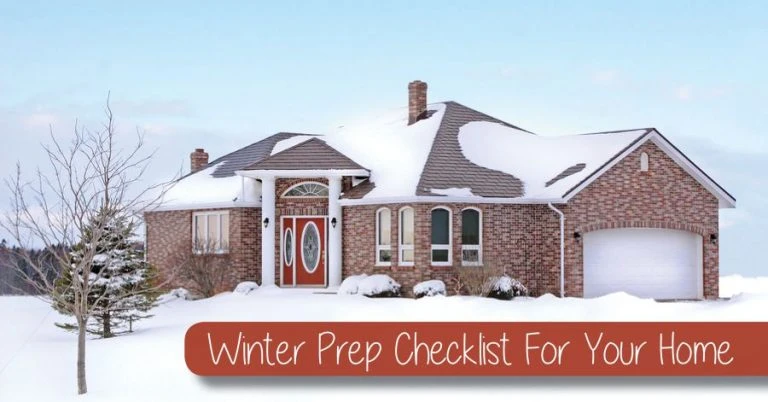
You’re probably thinking, ‘but Window Genie, it’s been fall for like… a week!’ We know, BUT it’s never too early to start your pre-winter check-up. We’re sharing a fantastic list from the home improvement master himself, Bob Vila…
Windows and Doors
- Check all the weatherstripping around windows and doorframes for leaks to prevent heat loss. Replace weatherstripping, if necessary.
- Replace all screen doors with storm doors.
- Replace all window screens with storm windows.
- Examine wooden window frames for signs of rot or decay. Repair or replace framing to maintain structural integrity.
- Check for drafts around windows and doors. Caulk inside and out, where necessary, to keep heat from escaping.
- Inspect windows for cracks, broken glass, or gaps. Repair or replace, if needed.
Lawn, Garden, and Deck
- Trim overgrown branches back from the house and electrical wires to prevent iced-over or wind-swept branches from causing property damage or a power problem.
- Aerate the lawn, reseed, and apply a winterizing fertilizer to promote deep-root growth come spring.
- Ensure rain or snow drains away from the house to avoid foundation problems. The dirt grade — around the exterior of your home — should slope away from the house. Add extra dirt to low areas, as necessary.
- Clean and dry patio furniture. Cover with a heavy tarp or store inside a shed or garage to protect it from the elements.
- Clean soil from planters. Bring pots made of clay or other fragile materials indoors. Because terra cotta pots can swell and crack, lay them on their sides in a wood carton.
- Dig up flower bulbs, brush off soil, and label. Store bulbs in a bag or box with peat moss in a cool, dry place for spring replanting.
- Remove any attached hoses and store them away for the winter to prevent cracks, preserve their shapes, and prolong their life. Wrap outside faucets with covers to prevent water damage.
- Shut off exterior faucets. Drain water from outdoor pipes, valves, and sprinkler heads to protect against pipe bursts.
- Inspect decks for splintering,decay, or insect damage and treat, if needed, to prevent further deterioration over the winter.
- Clean leaves, dirt, and pine needles between the boards of wooden decks to thwart mold and mildew growth.
- Inspect outdoor lighting around the property. Good illumination will help minimize the chance of accidents on icy walkways at night.
- Check handrails on exterior stairs to make sure they’re well secured.
Tools and Machinery
- Bring all seasonal tools inside and spray them with a coating of lightweight oil to prevent rust.
- Weatherize your lawn mower by cleaning off mud, leaves, grass, and debris.
- Move your snow blower and shovels to the front of the garage or shed for easy access.
- Prepare the snow blower for the first snowfall by changing the oil and replacing the spark plug.
- Sharpen ice chopper and inspect snow shovels to make sure they’re ready for another season of work.
- Make sure you have an ample supply of ice melt or sand on hand for steps, walkways, and the driveway.
Heating, Ventilating, and Air Conditioning
- Inspect the firebox and flue system to ensure that they’re clean of any soot or creosote and that there aren’t any cracks or voids that could cause a fire hazard.
- Check fireplace for drafts. If it’s cold despite the damper being closed, the damper itself may be warped, worn, or rusted. Consider installing a Chimney Balloon into the flue to air seal the area tightly.
- Clean or replace the air filter in your furnace for maximum efficiency and improved indoor air quality.
- Clean your whole house humidifier and replace the evaporator pad.
- Bleed valves on any hot-water radiators to increase heating efficiency by releasing air that may be trapped inside.
- Check that smoke alarms and carbon monoxide detectors are in working order.
- Remove air conditioners from windows or cover them with insulated liners, to prevent drafts.
- If you have an older thermostat, replace it with a programmable unit to save on heating costs.
- Install foam-insulating sheets behind outlets and switch plates on exterior walls to reduce outside airflow.
- Make sure fans are switched to the reverse or clockwise position, which will blow warm air down to the floor for enhanced energy efficiency and comfort.
- Flush a hot water heater tank to remove sediment, and check the pressure relief valve to make sure it’s in proper working order.
- Examine exposed ducts in the attic, basement, and crawl spaces, and use a sealant to plug up any leaks.
Gutters, Roof, and Drains
- Check for missing, damaged or warped shingles and replace, as necessary before you get stuck with a leak.
- Check for deteriorated flashing at the chimney, walls, and skylights and around vent pipes. Seal joints where water could penetrate, using roofing cement and a caulking gun.
- Check the gutters and downspouts for proper fastening, and re-secure if loose or sagging. The weight of snow and ice can pull gutters off the house.
- Clean gutters of any debris. Make sure downspouts extend away from the house by at least 5 feet to prevent flooding of the foundation and water damage from snowmelt.
- Clean leaves and debris from courtyard and pool storm drains to prevent blockages.
- Ensure all vents and openings are covered to prevent insects, birds, and rodents from getting inside to nest in a warm place.
Done? Congratulations! You’re officially ready for winter.
